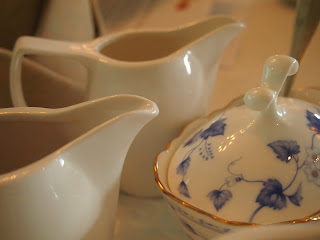The other day, I had the pleasure of meeting Mr “T” himself, Stephen Twining, scion of one of the oldest English tea companies in the world. As part of his recent South East Asian tour to share his passion for this popular beverage, Stephen, 48, visited Malaysia, and included a whistle-stop trip to Penang where he demonstrated how to make that perfect cup of cha at the E&O Heritage Hotel.
The presentation took us through the origins of tea, so long associated with the Brits, but actually, it was the Portuguese and Dutch who were the first Europeans to drink it.
Twinings was started in London in 1706 by one of his forefathers, Thomas Twining, a bold step in the days when it was more usual to drink coffee and beer than water. Brewers, fearing that they would lose business, persuaded the Government to put a huge tax on it, so it became a drink only of the rich and the aristocracy, spawning an entire new industry producing tea caddies and delicate English porcelain.
Incidentally, it was these tiny, dainty cups which gave ladies the opportunity to show how refined they were by sticking their little pinkies out when they held it to their lips.

In 1717, the tiny shop in the Strand in Central London was opened, where it stands to this very day. Queen Victoria made them a Royal Warrant Holder in 1837, and the company has supplied every English monarch since then.
300 years later, Twinings has just opened its second store: in the newly-opened Westfield Shopping Centre, Shepherd’s Bush, and today, the company produces some 250 varieties which are exported to 115 countries around the world, although Stephen was at pains to stress that the company have never been tea growers. “We have never owned tea gardens.”
Instead, their skill is in the buying and blending of teas from all over the world: China, India, Sri Lanka and other major producing regions, to create a consistent range of flavours because, rather like wines, the flavours of the teas change with the weather and terroir.
Their tea tasters train for five years before they are allowed to put together teas to very specific “recipes” which make up particular blends. Their most popular? It is still the bergamot-scented Earl Grey, specially blended for the second Earl Grey, the then British Prime Minister.
“Tea,” Stephen claimed, “is the most sociable drink in the world.”
He believes we spend too much time Facebooking and doing other internet things, and forgetting about good old-fashioned conversation, but, as soon as people have a cup in their hands, everyone around starts talking. This was certainly true of the morning; although the specially-invited audience sat to attention throughout the interesting, hour-long presentation, once the tea was poured, people started chatting to their neighbours.
Tea is also healthy, full of antioxidants which mop up free radicals, and calorie-free if drunk without milk. It is a pick-me-up with only half the caffeine of coffee.
We were given the opportunity to try three varieties: rather like a wine tasting session, they were paired with different foods: it started with The aforementioned delicately-scented Earl Grey to go with beef and smoked salmon sandwiches; then we had a mild and refreshing Jasmine Green Tea to accompany some scones with jam and cream, and finally, an unusual caffeine-free Strawberry & Mango Tea infusion, coloured red with hibiscus flower, served ice-cold with strawberry tarts.

So how does one produce that perfect cuppa? Firstly, you require a clean, preferably ceramic, teapot. Not, he insists, one which is lined with old tannin stains which will give the tea a stale, bitter taste. The next pre-requisite is good quality water which has not been previously boiled, as it will have lost some of its dissolved oxygen, important for bringing out the flavour.
The teapot should also be warmed with a smidgen of hot water which is then tipped out, after which the tea leaves are added: a good guide is one teaspoon (or teabag) per person although the intensity of the flavour, according to Stephen, is entirely down to personal taste, and depends on how much water is added to the leaves. Bring the water to the boil, and pour it over the leaves immediately; let stand for 2-3 minutes before pouring out. And if using teabags, avoid dunking. “If you want exercise,” he quipped, “go to the gym!”
As for that age-old question, “Which goes in first – the milk or the tea?” his diplomatic answer was, “Whatever brings you pleasure. “
Historically, when tea was made in a pot,” he went on to explain, “it was poured out into very delicate porcelain cups which could crack with the heat.” This meant that milk was added first to dilute the temperature.
“It’s your cuppa – so it’s down to you!”
Twinings
216 Strand
London, WC2R 1AP
Tel: 0207 353 3511

No comments:
Post a Comment